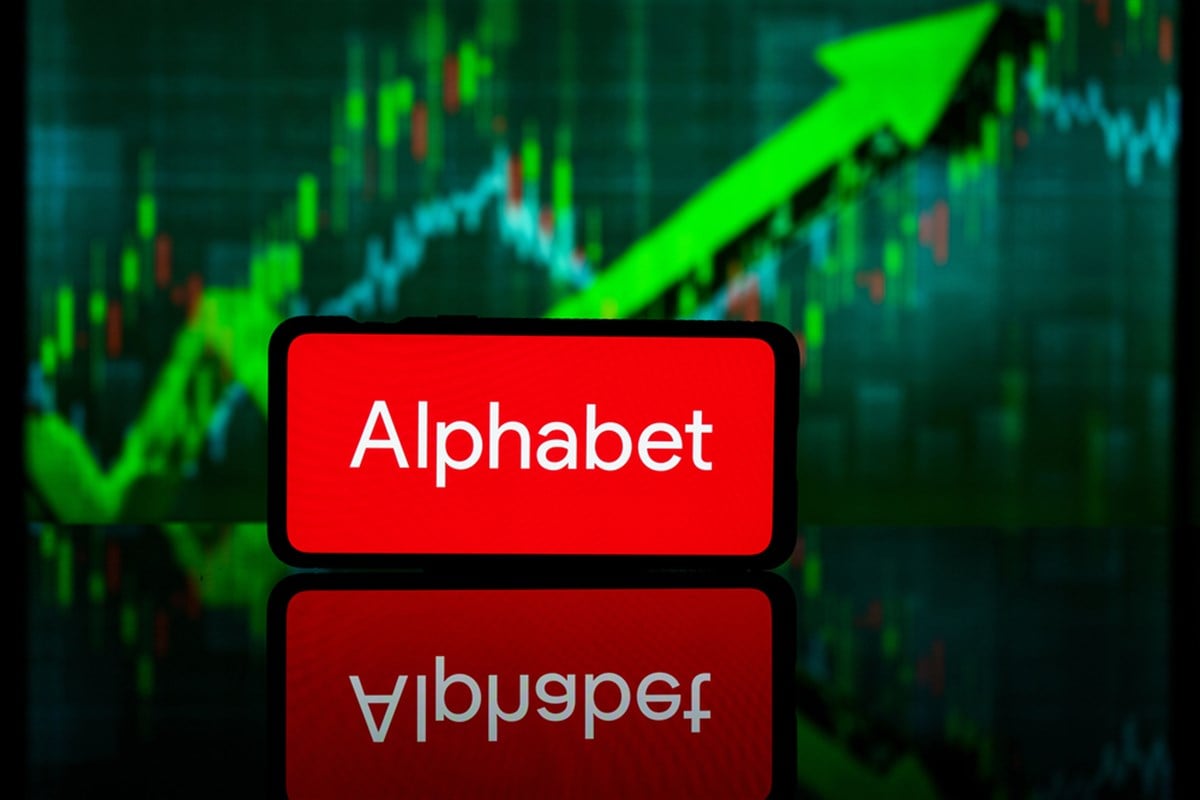| Written by Chris Markoch 
It may not be 2020, but it may start to feel like it for some companies, at least a little. Recreational vehicle (RV) manufacturers had a strong backlog on their order books as social distancing and remote work made mobile homes attractive options. Interest rates between 0% and 0.25% added fuel to that rally. However, the industry's last two years have been a different story. Higher-for-longer rates have hurt these companies as consumers became more sensitive to borrowing costs. A single rate cut won’t do much to change that, but if this is the first in a series of cuts between now and the end of 2026, it could be time for investors to start paying attention to these stocks. This is about more than a bullish narrative. These stocks, which fall in the automotive sector, haven’t been bid up as much as other stocks. That means a catch-up trade could be in place, and here are three names to consider. Thor Industries Shows Resilience, Primed for Growth Thor Industries Inc. (NYSE: THO) has proven that its flex pricing power and reduced reliance on discounting have helped deliver positive sales and earnings growth even in a weak retail environment. Thor Industries has used that strength to fortify its bottom line, reducing debt by nearly $200 million as of this writing in 2025. With dealer inventories normalizing and backlogs stabilizing, the company is positioned for volume recovery as borrowing costs ease. THO stock is down about 8% in the 30 days heading into its quarterly earnings report. On two separate occasions, the stock has met resistance at a level around $112, just below its 52-week high of around $118. This could be profit-taking since the stock is up 17.9% in the last three months. That rally has pushed the stock above the analysts’ consensus price of $96.88. However, in the 30 days leading up to earnings, analysts have been turning more bullish on THO stock. This includes analysts from Citigroup and Bank of America, who raised their price targets from $100 to $112 and $120, respectively. On Sept. 3, Zacks Research upgraded the stock from a Strong Sell to a Hold. Winnebago’s Strategic Pivot Can Pay Off Unlike Thor Industries, Winnebago Industries Inc. (NYSE: WGO) came in light on year-over-year (YOY) revenue and earnings when it reported earnings in June. The company also noted tariff impacts that it hoped to offset with modest price increases, which could reduce earnings per share (EPS) between 50 and 75 cents in its 2026 fiscal year. The performance is reflected in the WGO stock price, which is down 30% in 2025. Even with a rally of about 6.5% in the last three months, the stock is facing resistance around its current price of $33.25. The company is undergoing a strategic redesign, expanding into Class C motorhomes and the marine segment, positioning Winnebago to benefit from better financing. Analysts rate the stock as a Moderate Buy with a $43.22 target, 29% above the Sept. 23 price. Analysts May Finally Be Rewarding Camping World Camping World Holdings Inc. (NYSE: CWH) didn’t just deliver a strong earnings report in July; it was one of the company’s strongest quarters ever. Revenue was up 9.4% to $1.98 billion, and EPS was up 50% on a YOY basis. Specific to its RV business, the company also recorded a 20% increase in same-store sales for new and used units. Camping World has reduced debt by $75 million since late 2024 and expects $15–$20 million in annual tax savings from new legislation, strengthening its financial flexibility even before any rate cuts were announced. But that failed to impress analysts and investors. CWH stock has declined 5.2% since the report and over 18% in 2025. However, sentiment is beginning to shift. Camping World now holds a consensus Moderate Buy rating and a price target of $21.78, representing a 26.9% increase from current levels. Notably, Zacks Research, which previously upgraded Thor Industries, has upgraded CWH stock from a Strong Sell to a Hold.  Read This Story Online Read This Story Online |  Gold has surged past $3,600 an ounce, up 45% in the last year, but Weiss Ratings analyst Sean Brodrick says the real opportunity is in a little-known strategy that has historically outpaced gold's rallies many times over — including one past run where investors saw gains of more than 26,000%. Click here to see how this strategy works |
| Written by Ryan Hasson 
Alphabet (NASDAQ: GOOGL) has staged one of the most impressive rebounds in the market this year. After lagging behind many of its tech peers and broader indexes for much of the first half of 2024, the stock has flipped the script. Today, GOOGL is up 76% from its 52-week low, 45% over the past quarter, and more than 30% year-to-date. That rally has rewarded patient investors who bought the dip, but now it also raises an important question: Is it time to trim current positions and wait for lower prices before buying or re-entering? A Historic Opportunity Has Played Out For several months, Alphabet was trading at historically low earnings multiples compared to its long-term average. At the same time, the company retained its dominant position in digital advertising, search, and AI. For long-term investors, it was an opportunity to scoop up shares of a tech giant at a discount. Fast forward to today, and that valuation gap has essentially closed. Alphabet’s sharp re-rating came on the back of stellar Q2 earnings and a shift in narrative. Concerns over regulatory risks and competitive threats, once considered headwinds, have eased, helping fuel renewed confidence. Signs of Overheating Despite the improving outlook, investors may want to pause before adding fresh capital at current levels. The technical picture suggests the stock is overheated. Alphabet’s Relative Strength Index (RSI) has been hovering above 70, now in overbought territory. The RSI topped 80 days ago, a level not seen since 2023. The stock followed up with a pullback into its 50-day moving average before resuming its uptrend. That type of cooling-off period is typical when a stock gets stretched. It doesn’t negate the long-term bullish thesis, but it does suggest that buying here could mean chasing at the tail end of a short-term move. For existing shareholders, this is often the moment to consider trimming positions or locking in some gains. Where Might a Pullback Land? The $210–$200 zone stands out as a long-term area of support. While a pullback of that magnitude from current levels might be unlikely, it’s not impossible in a volatile market. More realistically, the $230 area, which aligns with a prior gap and the news-driven breakout following a favorable antitrust ruling, appears to be the first key level for potential buyers to watch. From a risk-reward standpoint, waiting for a reset in that area could offer a more attractive entry point than buying into current strength. Beyond the Chart: Fundamentals Still Strong Even if the stock is stretched technically, the fundamentals remain robust. Alphabet’s core businesses, including search, advertising, and Chrome, continue to grow steadily. However, its expanding growth drivers make the story even more compelling. Take Waymo, Alphabet’s self-driving unit. The company recently launched “Waymo for Business,” a program that allows corporations to offer employees robotaxi rides in cities such as Los Angeles, Phoenix, and San Francisco. Early partners include Carvana, the online used-car platform. This is Alphabet’s first coordinated push to capture corporate demand, potentially unlocking new commercial applications for its autonomous technology. Meanwhile, Google Cloud takes a differentiated approach in the increasingly competitive AI landscape. Instead of chasing mega-deals like Oracle’s $300 billion arrangement with OpenAI, Google Cloud focuses on the “next generation” of companies. By offering cloud credits, AI stack access, and technical support to startups like Loveable and Windsurf, Alphabet is betting that capturing tomorrow’s unicorns early will yield outsized returns. As COO of Google Cloud, Francis deSouza noted, Google’s “no compromise” AI stack, spanning hardware, models, and infrastructure, provides customers with flexibility and enterprise-grade performance, an edge in winning long-term cloud loyalty.  Read This Story Online Read This Story Online |  |
| Written by Chris Markoch 
It’s no surprise that The Hershey Company (NYSE: HSY) and Mondelez International (NASDAQ: MDLZ) are lagging the broader market in 2025. However, it’s worth noting that Hershey stock has outperformed Mondelez nearly 2:1 this year. This comes despite rising cocoa prices that impact both companies. Cocoa prices may be beyond the companies’ control, but how each manages rising costs sets them apart. With Halloween and the holidays driving peak candy demand, the strength of their non-chocolate portfolios could determine which stock is the sweeter buy. Why Are Cocoa Prices Soaring? Stock charts often tell a story, and for Hershey and Mondelez, the story is cocoa. Both stocks hit all-time highs in 2023 but have since fallen sharply as cocoa prices surged. Unfavorable weather in West Africa, which produces about 70% of the world’s cocoa, has tightened supply, squeezing margins and eroding market share for major confectioners. At the same time, GLP-1 weight-loss drugs are dampening consumer demand for sweets. Put together, it’s no surprise investors are treating candy stocks as a bitter bet. Hershey Grows Through Diversification The twin impacts of higher commodity prices and shrinking waistlines explained why HSY stock was one of the worst-performing stocks in 2024. It didn’t help that the company had a change in the C-suite as Kirk Tanner replaced Michele Buck in 2023. While this change was part of a predetermined succession plan (and Buck has not left the company), it was a prove-it moment for investors. So far, Tanner has delivered. Hershey has successfully passed along a price increase of around 26% on popular labels like Reese’s, Kit-Kat, and PayDay candy bars. However, the company’s strategy goes deeper than that. Much like the acquisition of Frito-Lay, which has made PepsiCo Inc. (NASDAQ: PEP) more than a soft drink company, Hershey has been expanding beyond chocolate for some time. That's why it launched Shaq-A-Licious XL Gummies with Shaquille O’Neal in 2024, which sold more than 11 million units, making it the top candy debut of the year. Plus, it leaned into and expanded its portfolio of salty snacks, particularly with the SkinnyPop brand. Hershey effectively shielded against higher cocoa prices and private label momentum. Mondelez Relies on Cost Controls Mondelez has a portfolio beyond chocolate. However, its earnings report did not show the strong gains made by Hershey in these categories. Much of the company’s margin preservation was through cost-cutting measures. That helped it beat quarterly estimates by about 7% but trails Hershey’s 23% earnings surprise. Earnings growth comparisons also favor Hershey: while its EPS slipped 3% year-over-year, Mondelez posted a steeper 15% drop. The difference underscores Hershey’s ability to pass along price hikes to consumers, something Mondelez still needs to prove this quarter. A Case of the Known or the Unknown Based on conventional metrics and technical indicators, MDLZ stock appears to have more upside. Both stocks trade at premiums to their historical price-to-earnings (P/E) multiples and the average for consumer staples stocks. However, never forget that earnings growth is the key driver of stock prices. As detailed above, Hershey has been able to pass its higher cocoa prices on to consumers. That’s a feat that Mondelez will try to do this quarter. If it can, MDLZ stock has more upside, according to the consensus price target of analysts. However, Hershey has received two significantly bullish upgrades in the last month. BNP Paribas Exane lifted its rating on HSY stock from Neutral to Outperform. More impressively, on Sept. 16, Goldman Sachs upgraded the stock from a Sell to a Buy and raised its price target to $220 from $170. That would be a gain of about 15%, higher than the consensus 13% growth expected in MDLZ stock.  Read This Story Online Read This Story Online |  Every new policy out of Washington seems to drive more debt, more inflation, and more risk for your savings. If you don't act now, your portfolio could be the one paying the price.
Gold has preserved wealth through political turmoil, recessions, and market collapses. Today, it stands out as one of the few assets that can provide stability when everything else feels uncertain.  [Claim Your Free Gold Wealth Blueprint] [Claim Your Free Gold Wealth Blueprint] |
|